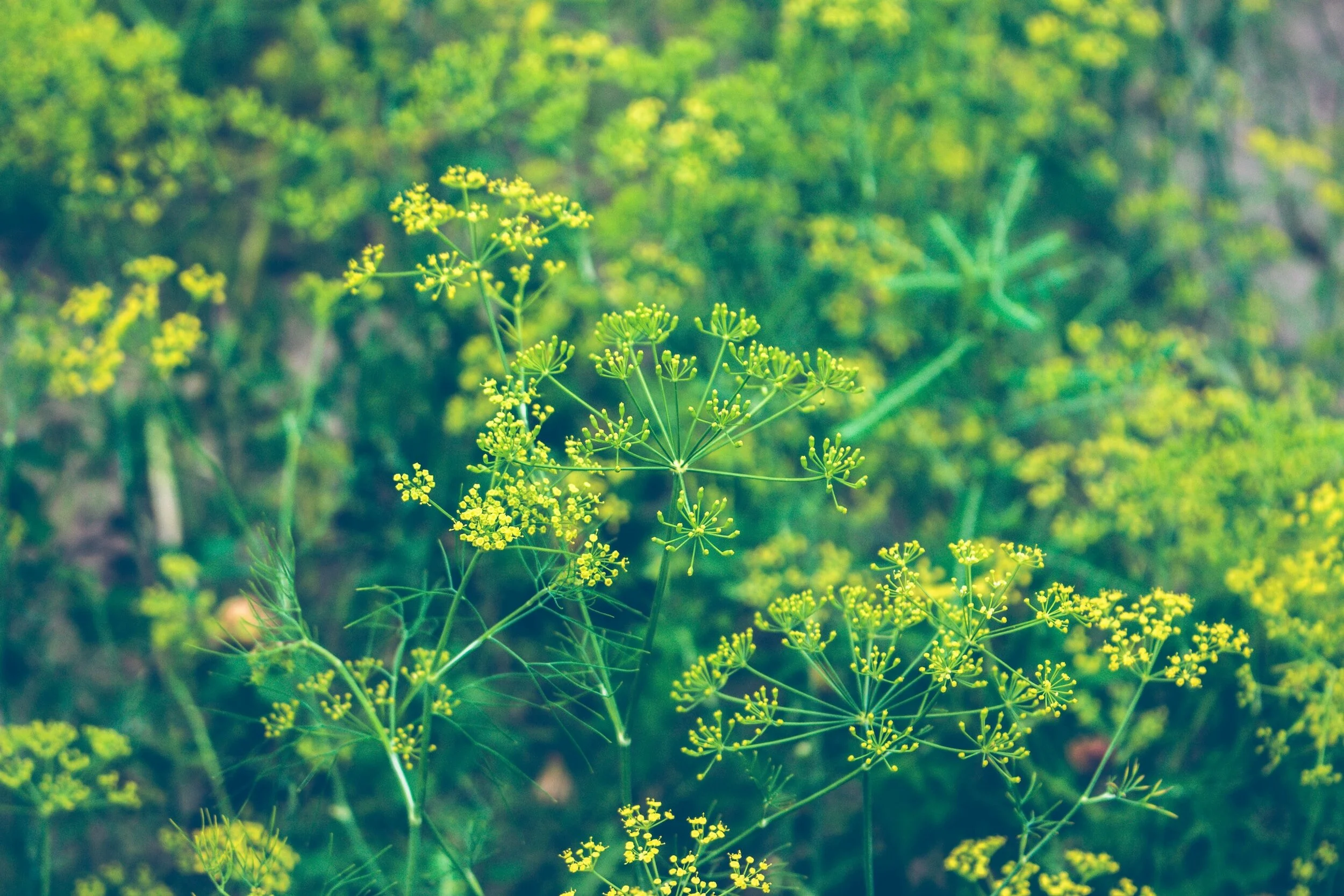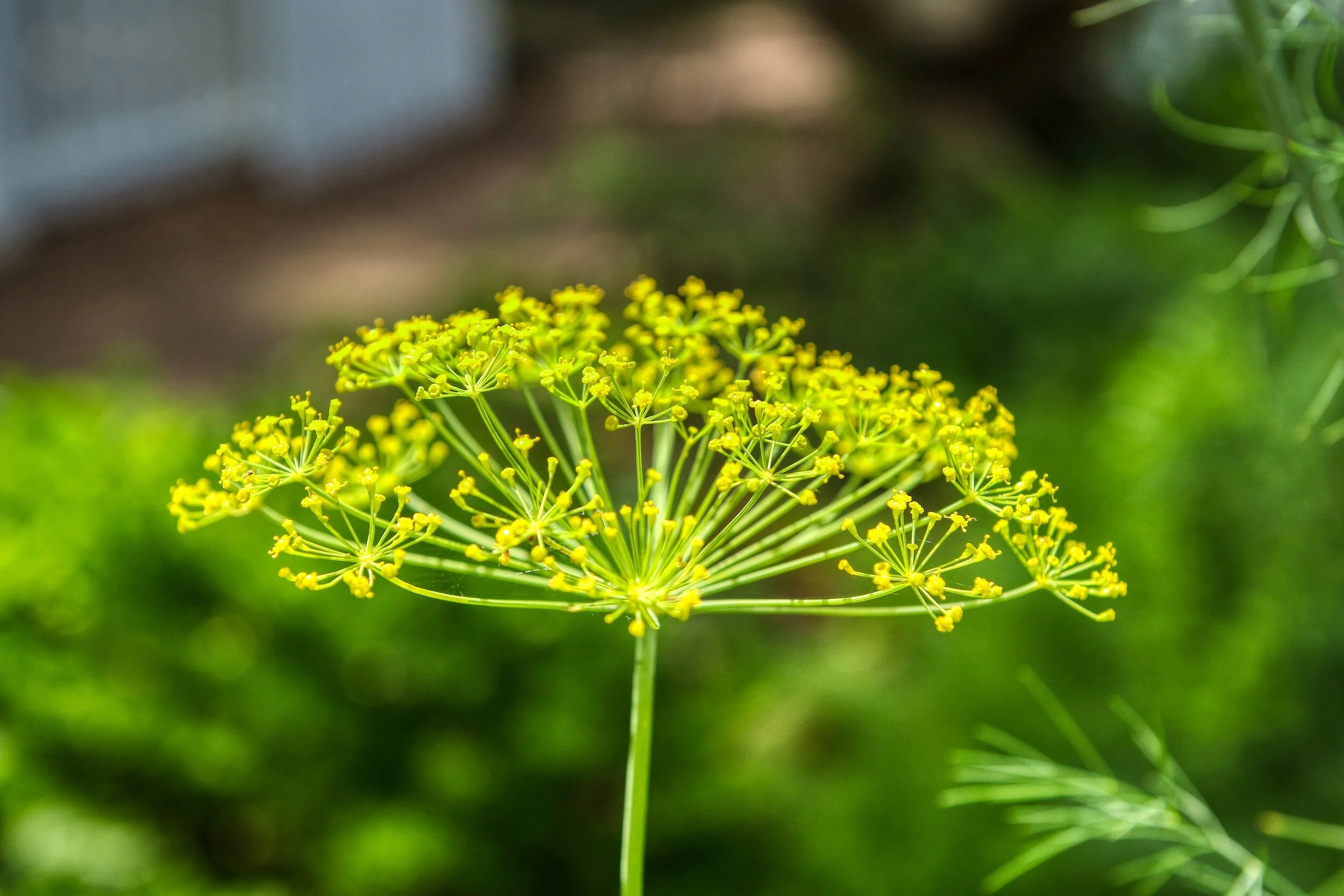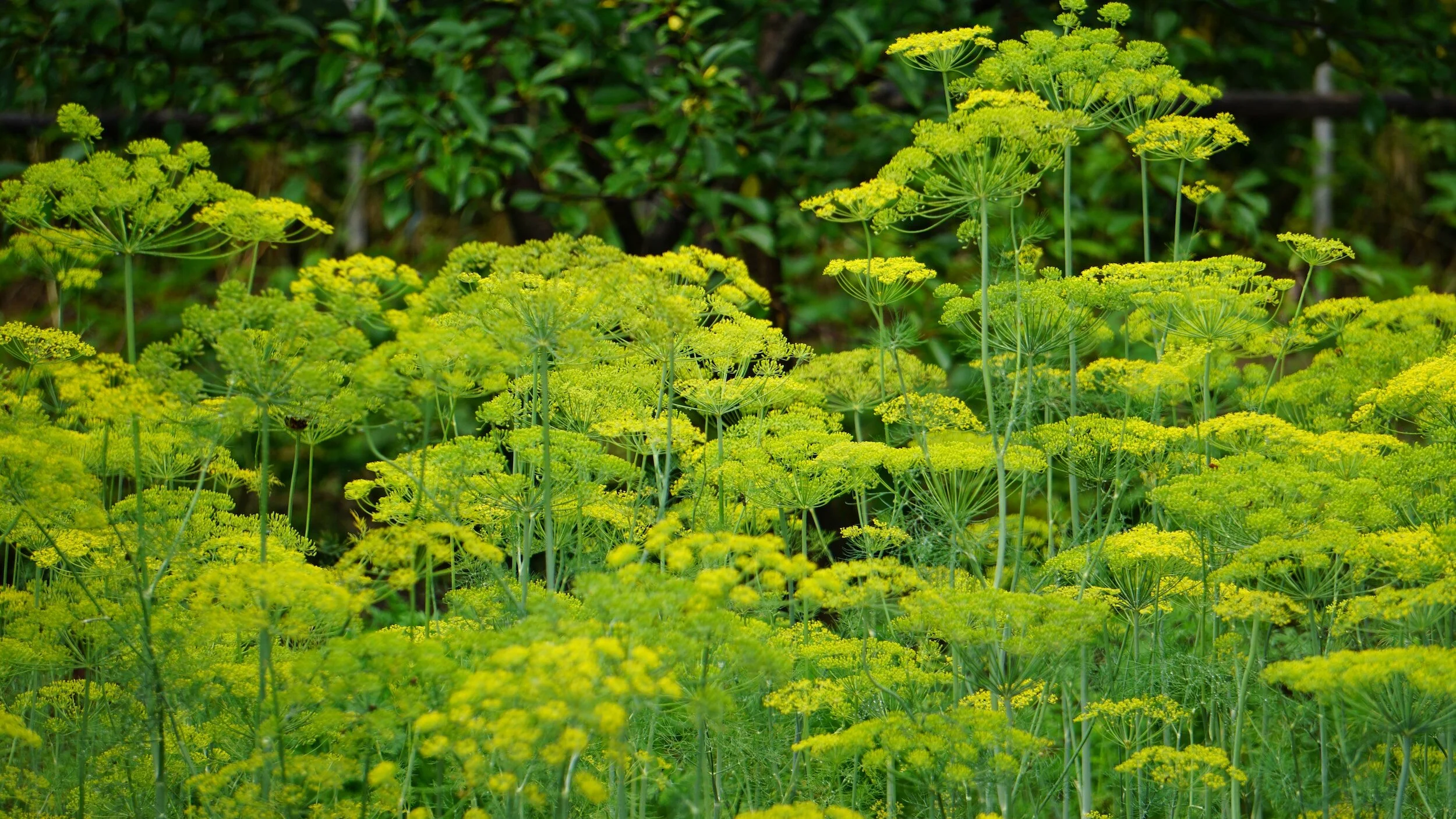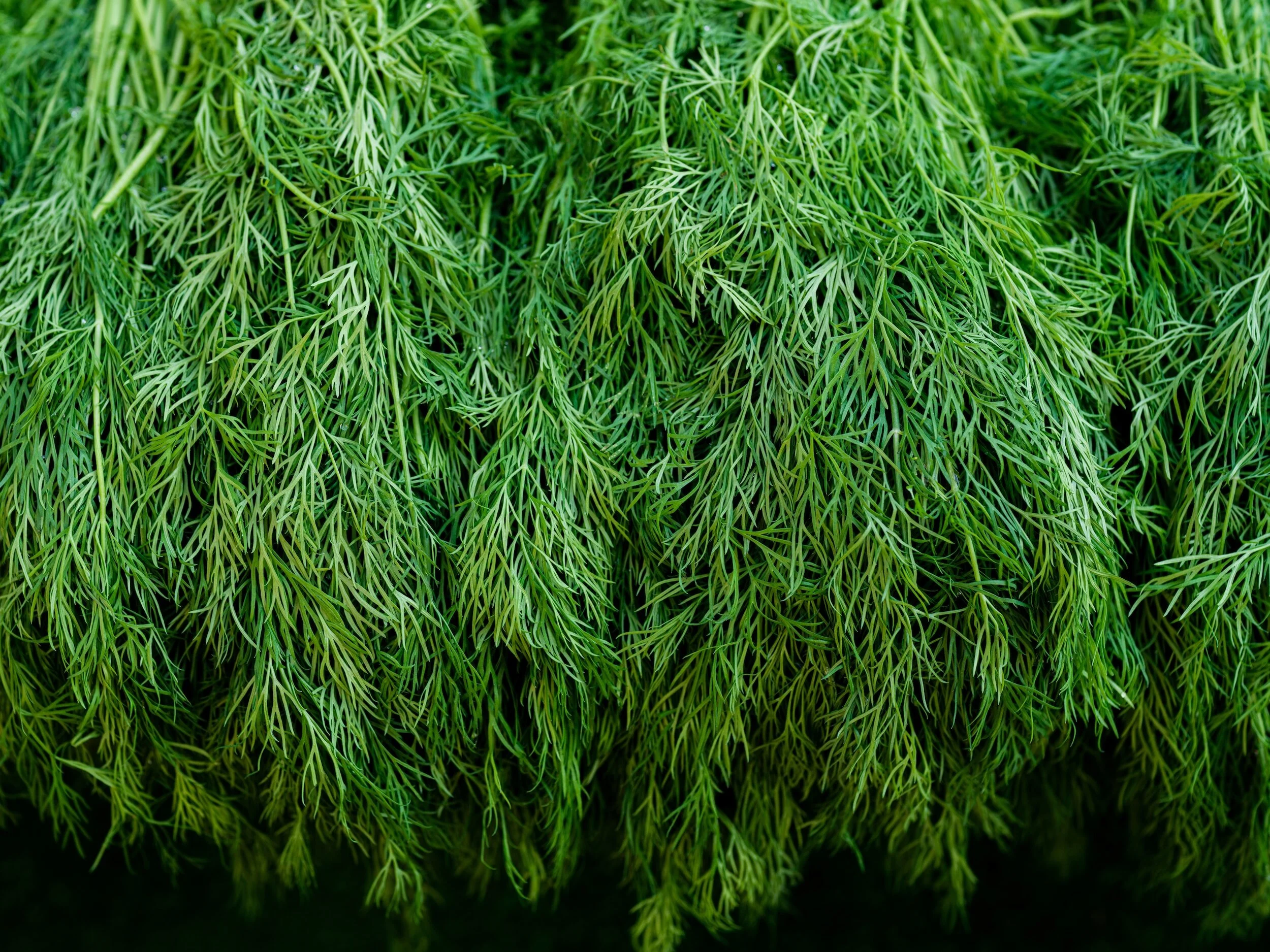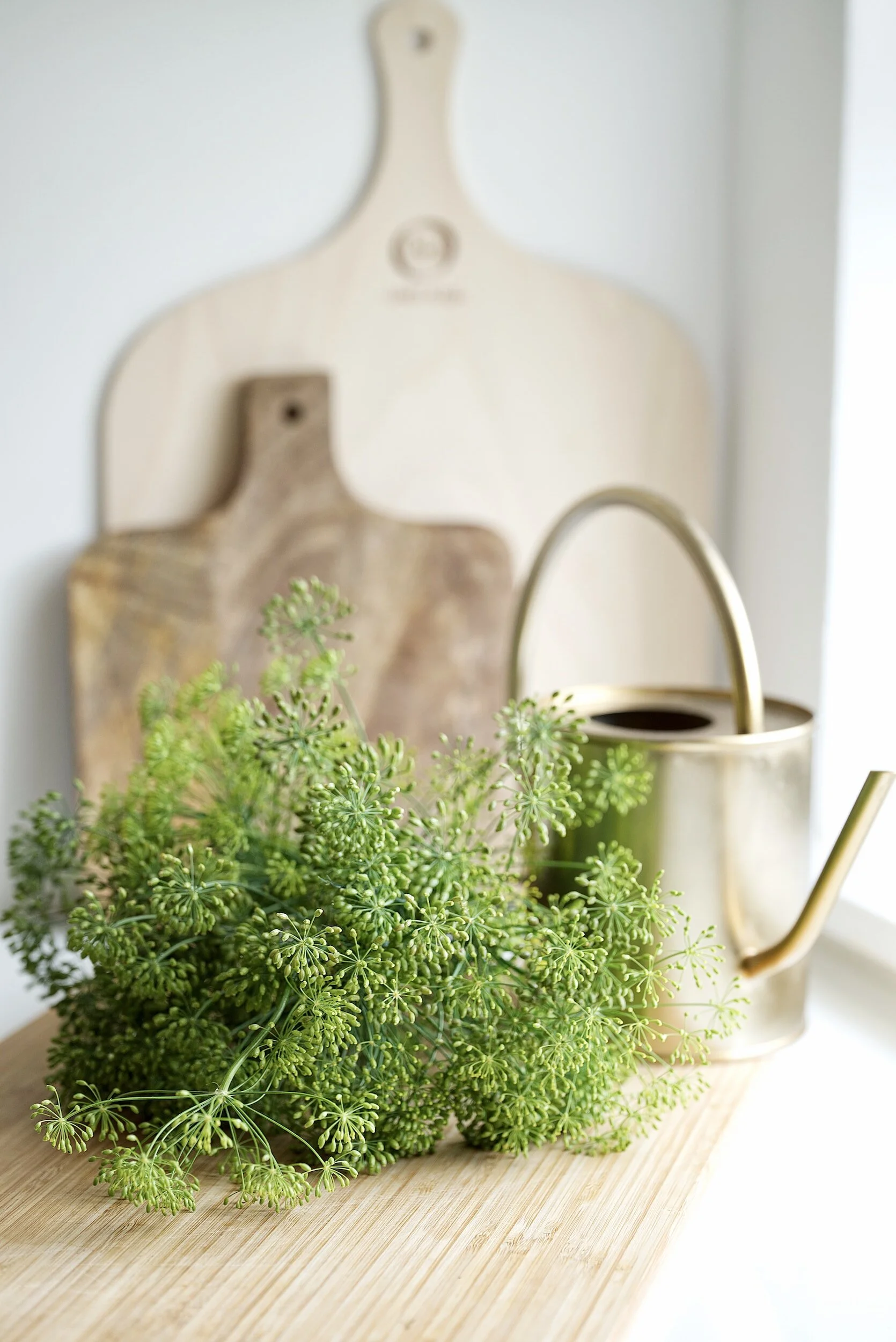How to Prune Dill
This article has links to products that I may make commission from.
Dill, with its feathery green leaves and delicate yellow flowers, is one of my favorite things to grow.
As with most plants, to truly harness its potential and enjoy a bountiful harvest, understanding its care is crucial. One aspect often overlooked or approached with trepidation is pruning.
In this guide, I will take you through the process of pruning dill, diving deep into its why's and how's.
To learn more about growing dill, check out my guides:
A Step-by-Step Guide to Pruning Dill
To reap the most benefits from dill, pruning is essential.
Let's delve into the specifics of pruning dill:
Gather Your Tools:
Sharp Scissors or Pruners:
A clean, sharp pair minimizes damage to the plant and gives a clean cut, reducing the risk of diseases.
Here are my favorite garden pruners for the job:
Identify the Right Time:
Early Pruning:
Begin pruning when the dill plant is about 12 inches tall to encourage branching.
This ensures you have a bushier plant with more leaves to harvest.
During the Growing Season:
Regularly prune the dill plant to maintain its shape and promote growth.
Pruning for Growth:
Identify the main stem (central stem) of the dill plant.
Prune or pinch off the top 2-3 inches of this main stem. This action encourages the plant to grow outwards, making it bushier and promoting more leaf production.
Additionally, trim any weak or leggy stems to encourage sturdier growth.
Managing Flowers:
If your primary purpose is to harvest dill leaves, it's crucial to prevent the plant from flowering too soon, as flowering can reduce the plant’s leaf production.
Pinch off any budding flowers you see forming. However, if you wish to harvest dill seeds, allow a few flowers to bloom and mature.
Post-Flowering Pruning:
After the dill has flowered and you've harvested seeds, you might notice the plant looking a bit ragged.
Trim back the stems that held the flowers to rejuvenate the plant.
General Maintenance:
Remove any yellowing or diseased leaves as you notice them.
This not only improves the overall appearance but also ensures that the plant's energy is directed to healthy growth.
Special Considerations:
Aerogarden:
If you're growing dill in an aerogarden, be mindful of space.
Regularly trim the dill to ensure it doesn't crowd out other plants or grow too tall for the lighting system.
Different Regions:
Techniques might vary slightly based on your location.
For instance, the intense sun in places like Florida may affect the dill's growth pattern, requiring adjustments in pruning techniques.
After Pruning:
Water your dill plant after pruning to help it recover and continue growing robustly.
Remember, always make sure your dill plant is in well-draining soil to prevent over-watering and potential root rot.
My favorite dill seeds for planting:
Check out my guide How to Dry Dill.
Understanding the Dill Plant
Dill, with its unique aroma and taste, is more than just a culinary favorite.
Physical Appearance:
At first glance, the dill plant might remind you of a feathery green cascade. With its slender stems and delicate leaves, it's a standout in any garden setting.
As it matures, the dill plant will produce bright yellow flowers, often referred to as dill heads or dill flowers.
Life Cycle & Growth Patterns:
Dill is an annual herb, meaning it completes its life cycle within one growing season.
However, if allowed, it can self-seed, providing you with fresh dill plants the following year without any additional planting.
How tall does dill grow? Depending on its variety and conditions, dill can reach between 2 to 4 feet in height.
Knowing its growth pattern will assist you in making timely pruning decisions, ensuring you don't miss out on the peak harvest time.
Culinary & Medicinal Value:
Beyond its culinary uses, the dill plant has been revered for its medicinal properties.
The leaves, commonly known as dill weed, are used to flavor many dishes, while the seeds are often used for pickling or as a spice.
Both dill seeds and leaves offer digestive benefits and have been traditionally used to combat minor stomach ailments.
Growing Conditions:
Dill thrives in full sunlight but can tolerate a bit of shade.
Ideally, it prefers well-drained soil with a slightly acidic to neutral pH.
Regular watering is essential, especially during dry spells, but be cautious to avoid waterlogging the soil.
For those in regions like Florida, special attention may be required due to humidity and unique soil conditions.
Companion Plants:
In your garden, it's good to note that dill is a friendly neighbor to many plants, especially lettuce and cucumbers.
However, it doesn't get along well with carrots or tomatoes, as they compete for resources.
Ready to learn more about herb gardening? Check out my guides:
Why Prune Dill?
Dill, in its natural essence, is a hardy herb that can pretty much fend for itself.
Yet, gardeners worldwide dedicate time to pruning dill. Why? Pruning isn't just about controlling a plant's growth; it’s about optimizing its potential.
Let's break down the reasons:
Vigor and Health:
At the core, pruning is like giving your dill a health check-up.
Removing old, yellowed, or damaged leaves helps the plant divert its energy to new growth.
By pruning, you're ensuring the dill plant is investing its resources where it counts, leading to a healthier plant overall.
Maximizing Harvest:
Every gardener looks forward to the harvest.
By pruning dill strategically throughout the growing season, you can often increase your yield.
Regular trimming encourages branching, leading to more leaves, which in turn means more fresh dill for your kitchen.
Controlling Height:
Dill has an enthusiastic nature and can grow quite tall if left unchecked, especially in systems like aerogardens where space might be a premium.
By controlling its height through pruning, you ensure that it doesn't overshadow or crowd out neighboring plants.
Seed Production:
If your aim is to collect dill seeds—whether for culinary use or future planting—pruning plays a pivotal role.
By selectively pruning and allowing certain stems to flower, you can encourage more prolific seed production.
Aesthetic Appeal:
Beyond the practical reasons, there’s an artistic side to gardening.
A well-pruned dill plant not only functions better but looks more manicured and attractive, adding beauty to your garden or indoor space.
Preventing Disease:
Overly dense growth can restrict airflow around plants, creating a moist environment perfect for fungal diseases.
Regular pruning ensures better air circulation, keeping your dill plant healthy and reducing the chances of disease.
In essence, while dill can grow without much human intervention, the act of pruning dill amplifies its potential. Whether you're a home cook eagerly awaiting a fresh batch of dill for your recipes, a gardener passionate about the aesthetics, or someone focused on the plant's health and productivity, understanding the "why" behind pruning is the first step to mastering the "how".
For more pruning tips, check out my guides:
FAQs
Does dill grow back after trimming?
Absolutely. Dill is resilient and responds well to pruning.
When you trim dill, you often stimulate it to produce even more growth.
In fact, regular trimming can make your dill plant bushier and more productive.
Are dill flowers edible?
Yes, dill flowers are entirely edible.
They have a concentrated dill flavor and can be used as garnishes, in pickling, or even in salads.
Their vibrant yellow color can also add aesthetic appeal to dishes.
Does dill grow back every year?
Dill is technically an annual herb, which means it completes its life cycle in one growing season.
However, if you let your dill go to seed, it's likely that it will self-sow and provide you with new plants the following year.
This self-seeding capability can make dill seem like a perennial, returning year after year.
What's the difference between dried dill and dill weed?
"Dill weed" refers to the fresh or dried leaves of the dill plant.
On the other hand, when most people mention "dried dill," they could be referring to either the dried leaves or the seeds.
It's essential to clarify the context, especially in cooking, as dill seeds and dill weed have different flavor intensities.
Can dill be grown indoors?
Absolutely. Dill can thrive indoors, especially if you provide it with adequate light, either from a sunny windowsill or grow lights.
Gardeners often grow dill in containers or hydroponic systems like aerogardens indoors.
How tall can dill plants grow?
Depending on its variety and growing conditions, dill can reach heights between 2 to 4 feet, sometimes even taller if left unchecked.
How do I harvest dill without killing the plant?
When harvesting dill, always use sharp scissors or pruners and cut no more than one-third of the plant at a time.
This ensures that the plant has enough foliage left to continue photosynthesis and growth.
Are dill flowers the only part that produces seeds?
Yes, the dill flowers or "heads" are the precursor to the seeds.
Once these flowers mature and dry, they will produce the dill seeds that many are familiar with, especially in pickling.
For more herb gardening tips, check out my guide:
Pruning dill is more than just a gardening task; it's an art. When you know how to cut fresh dill, how to trim dill plant, or even the intricacies of growing dill in pots, you ensure a healthy and productive plant.
